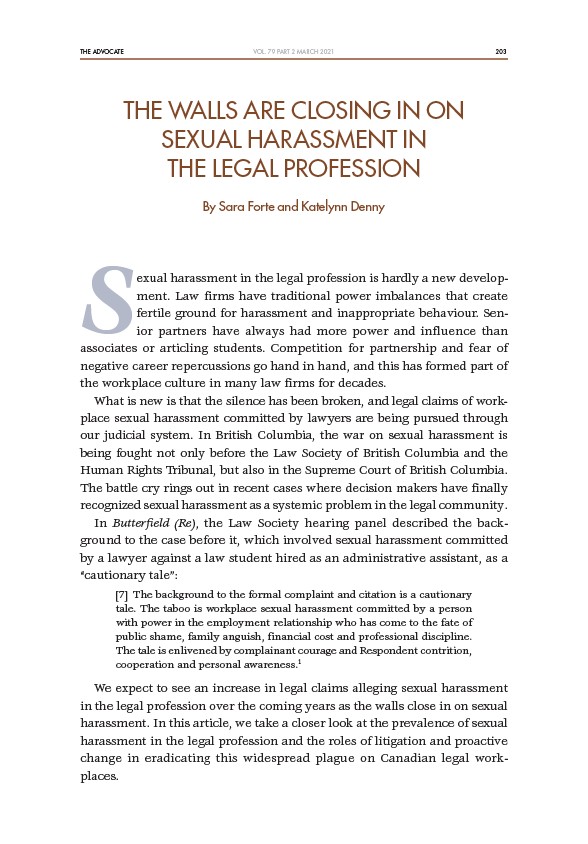
THE ADVOCATE 203
VOL. 79 PART 2 MARCH 2021
THE WALLS ARE CLOSING IN ON
SEXUAL HARASSMENT IN
THE LEGAL PROFESSION
By Sara Forte and Katelynn Denny
Sexual harassment in the legal profession is hardly a new development.
Law firms have traditional power imbalances that create
fertile ground for harassment and inappropriate behaviour. Senior
partners have always had more power and influence than
associates or articling students. Competition for partnership and fear of
negative career repercussions go hand in hand, and this has formed part of
the workplace culture in many law firms for decades.
What is new is that the silence has been broken, and legal claims of workplace
sexual harassment committed by lawyers are being pursued through
our judicial system. In British Columbia, the war on sexual harassment is
being fought not only before the Law Society of British Columbia and the
Human Rights Tribunal, but also in the Supreme Court of British Columbia.
The battle cry rings out in recent cases where decision makers have finally
recognized sexual harassment as a systemic problem in the legal community.
In Butterfield (Re), the Law Society hearing panel described the background
to the case before it, which involved sexual harassment committed
by a lawyer against a law student hired as an administrative assistant, as a
“cautionary tale”:
7 The background to the formal complaint and citation is a cautionary
tale. The taboo is workplace sexual harassment committed by a person
with power in the employment relationship who has come to the fate of
public shame, family anguish, financial cost and professional discipline.
The tale is enlivened by complainant courage and Respondent contrition,
cooperation and personal awareness.1
We expect to see an increase in legal claims alleging sexual harassment
in the legal profession over the coming years as the walls close in on sexual
harassment. In this article, we take a closer look at the prevalence of sexual
harassment in the legal profession and the roles of litigation and proactive
change in eradicating this widespread plague on Canadian legal workplaces.